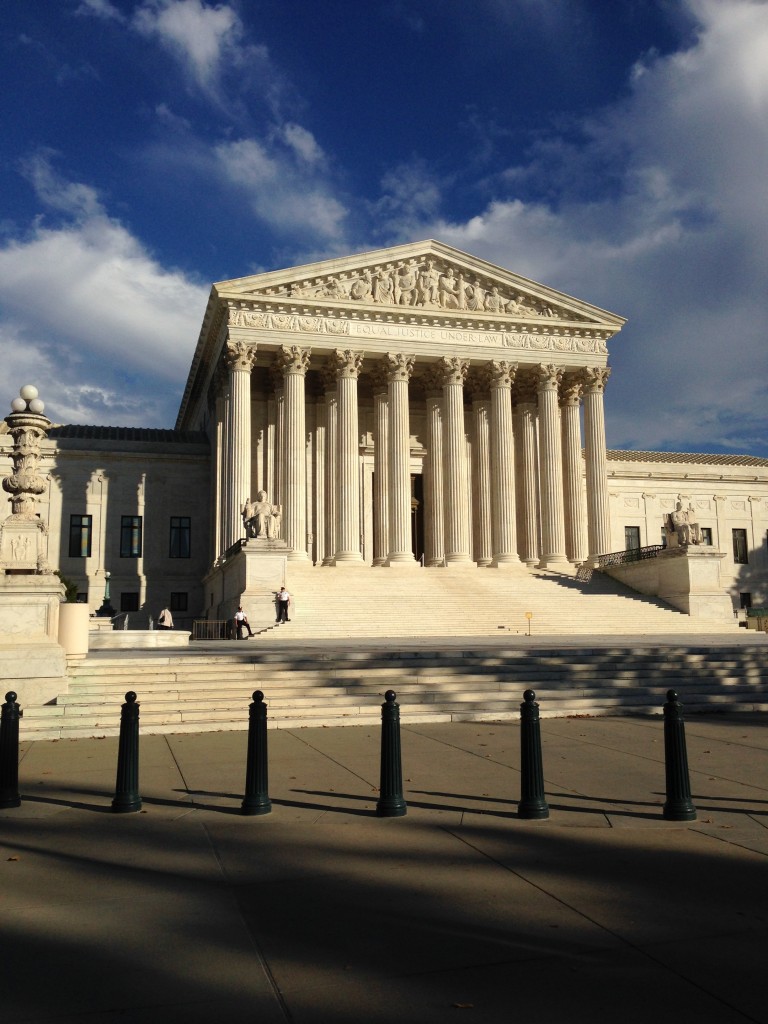Welcome to Part II in our SCOTUS Watch blog series where we are looking at US Supreme Court cases this term that could have affect agriculture. If you missed Part I, click here.
Today, we will take a look at Murr v. Wisconsin, a case involving how separate parcels of land should be treated when conducting a regulatory takings analysis.
Legal Background
The US Constitution provides that private property may not be “taken for public use, without just compensation.” A government regulation constitutes a taking under the Fifth Amendment if it “goes too far.” There are essentially three types of regulatory takings cases, known based upon their seminal US Supreme Court case names: Penn Central, Lucas, and Loretto. This case involves a Lucas taking analysis.
A Lucas taking occurs where a landowner is deprived of “all economically beneficial uses in the name of the common good” of the parcel of land. In Lucas a state law prohibited a landowner from building any habitable structures on the property. The US Supreme Court found that this regulation deprived the landowner of all economically beneficial uses of his land, and that a taking occurred. In making this analysis, courts consider the value of the “parcel as a whole” rather than dividing the parcel into discrete segments.
Factual Background
The Murr siblings own two 1-acre waterfront parcels in the St. Croix Subdivision in Wisconsin. The parcels were purchased separately by the Murrs’ parents in 1959 (Lot F) and 1963 (Lot E). The family built a cabin on Lot F, but Lot E remained undeveloped. In 1994, ownership of Lot F was transferred to the siblings, and ownership of Lot E was likewise transferred in 1995.
In 2004, the siblings planned to sell Lot E and use the proceeds to upgrade the cabin on Lot F. This is when they realized that City regulations, passed in 1975, prohibited them from selling or developing Lot E. In order for development, a “net project area” of 1 acre was required. Lot E, although 1 acre in size, did not meet this requirement when the non-project area was subtracted. This can include floodplains, slope preservation zones, and rights of way. A grandfather clause exists, but only for property owned by someone who does not own an abutting parcel. Because the Murrs own both Lots E and F, the grandfather provision does not apply and they cannot develop the land.
After unsuccessfully seeking a variance from this requirement, the Murrs filed an inverse compensation suit contending that the prohibition on selling or developing the property leaves it economically useless and results in a taking of their private property rights with regard to Lot E.
Key to determining whether a taking occurred is ascertaining what constitutes the parcel of land to be considered. The Murrs argue the parcel is only Lot E, while the government argues that lots E and F should be considered together as one parcel. This is a key issue when conducting a Lucas analysis. If the parcel is Lot E only, then it appears much more likely the Murrs have been deprived of all beneficial use. If, on the other hand, the parcel is Lots E and F, all economic uses are likely not lost due to the existing cabin on Lot F.
Lower Court Opinions
The trial court dismissed the claim on summary judgment, finding there was no regulatory taking as a matter of law.
The Wisconsin Court of Appeals sided with the government, finding that because the Murrs owned both contiguous parcels, the “parcel” for a takings analysis was correctly analyzed as both Lots E and F together as one parcel. Specifically, the Court of Appeals states that “contiguous property under common ownership is considered as a whole regardless of the number of parcels contained therein.” Because of this view, the Court of Appeals found that no taking occurred because the property–when viewed as one parcel–“retains beneficial and practical use as a residential lot.”
The Wisconsin Supreme Court declined review of the case, leaving the Court of Appeals decision to stand.
Supreme Court Case
The question presented to the US Supreme Court is: “In a regulatory takings case, does the ‘parcel as a whole’ concept establish a rule that two legally distinct, but commonly owned contiguous parcels must be combined for takings analysis purposes?” Courts across the country are in conflict on this issue–likely a strong incentive for the US Supreme Court to take this case. Wisconsin and Michigan have taken the same approach that separate lots are one parcel if there exists common ownership. Massachusetts has established a rebuttable presumption in favor of one parcel. Florida takes the opposite approach, having a rebuttable presumption that lots are separate parcels. Ohio and Idaho have treated parcels separately in similar situations.
The SCOTUS Blog has a case page where updates are posted. To see a copy of the Petition for Cert, click here. The response brief may be viewed here. To see the plaintiff’s Reply, click here.
Why Do We Care?
Although the issue in this case seems technical, it can have a huge impact on regulatory takings cases. In the Murr case, for example, the answer to whether these lots should be considered one or two parcels will likely also determine whether the Murrs are successful in their takings claim and, thus, whether they are entitled to just compensation. And, frequently in regulatory takings cases, this simple technical question will have this same major impact. We need to be a clear answer as to how separate parcels adjoining one another under common ownership will be treated for regulatory takings purposes, and it appears that the US Supreme Court will give us one this term.













